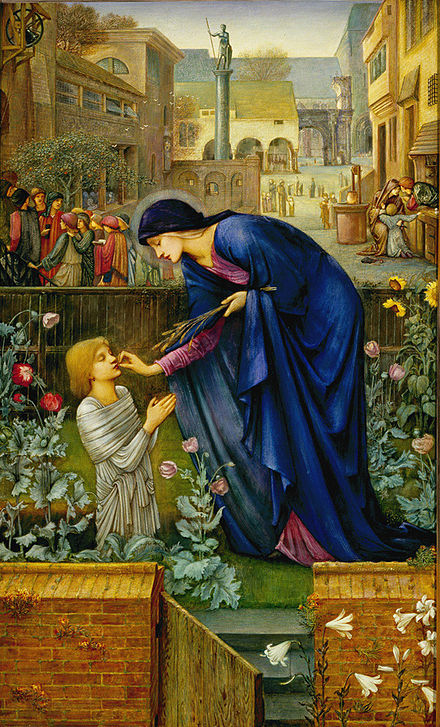In 2009, the military base at Fort Hood installed what can only be described as a bizarre sculpture. Sitting outside the headquarters building is a monumental equestrian statue of medieval European fantasy complete with all the expected trappings—chain mail, axe, helmet and a shield here emblazoned with the caltrop of the III Corps United States. As this imposing character looks down with red eyes from his muscled horse, one cannot help but wonder about the figure’s appropriateness within this space. Surely, the statue would better suit an event at Comic-Con than an Army Base.
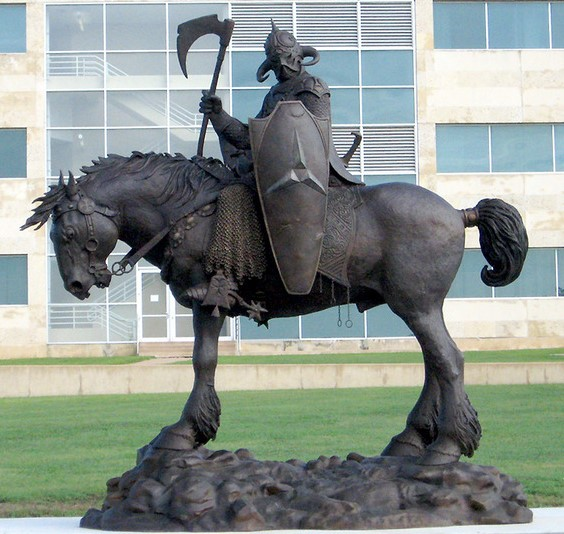
The sculpture renders Frank Frazetta’s “Death Dealer” a character originally painted in 1973. During his career Frazetta would become famous for creating the cover art for re-printings and pastiches of Robert E. Howard’s Conan the Cimmerian. The infamous, Western barbarian, who spends his time battling Oriental sorcerers and slaughtering black cannibals, played some role in inspiring the “Death Dealer” as suggested by this cover of “Conan the Conqueror” from 1967.
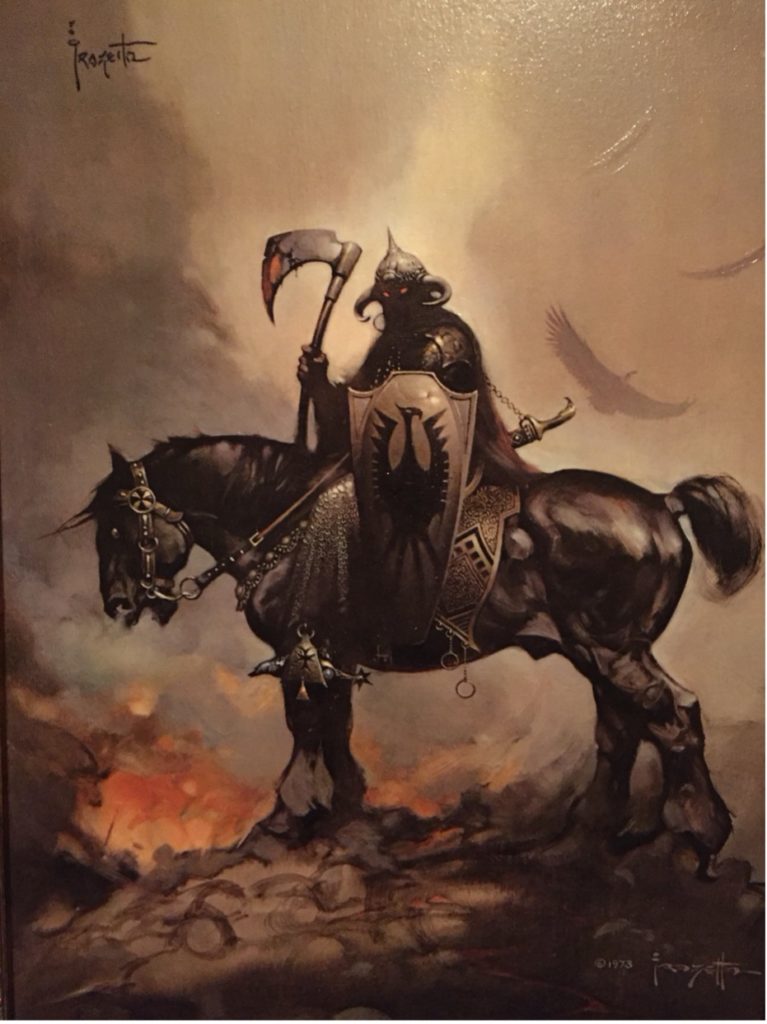

While the original painting obscures the phantom figure’s physical qualities, his weaponry and costume code him as white. The bearded axe and horned helmet recall popular iconography denoting “Viking”[ness], though as some scholars have demonstrated such helmets were largely products of the nineteenth century. Furthermore, his shield bears the reichsadler, the black heraldic eagle employed by the Holy Roman Emperor which has also been used for more contemporary and horrifying purposes.


Admittedly, the visual elements alone do not convey the more problematic elements found in the Conan narratives. As the “Death Dealer” grew in popularity, even becoming adopted as the III Corp mascot in 1986, Frazetta joined author George Silke to create a backstory for his creation in 1987. The novel “Prisoner of the Horned Helmet” begins in a proto-European forest defended by “Gath of Baal” (our Death Dealer). The text, perhaps unsurprisingly, describes “Gath” as a “barbarian” who must defend his homeland from the invading Kitzaaks, a pseudo-Mongol Empire, and their collection of Eastern allies, including the naked and bloodthirsty “Feyan Dervishes.” The cover art here depicts a scene where our hero encounters desert-dwelling “nomads” who have been mutated into dog-faced beings by their continued use of drugs. Such tropes have connections to medieval Latin Christian polemical narrative of Muslims, frequently described as a “race of dogs” or in the case of the Nizari State at Alamut, engaged in the consumption of hashish as part of a perverted “Saracen” practice. Finally, as the “Death Dealer” raises the axe, the artist reveals those corded arms, his previously indeterminable “epidermal” (Heng, 181-184) whiteness is now made manifest.
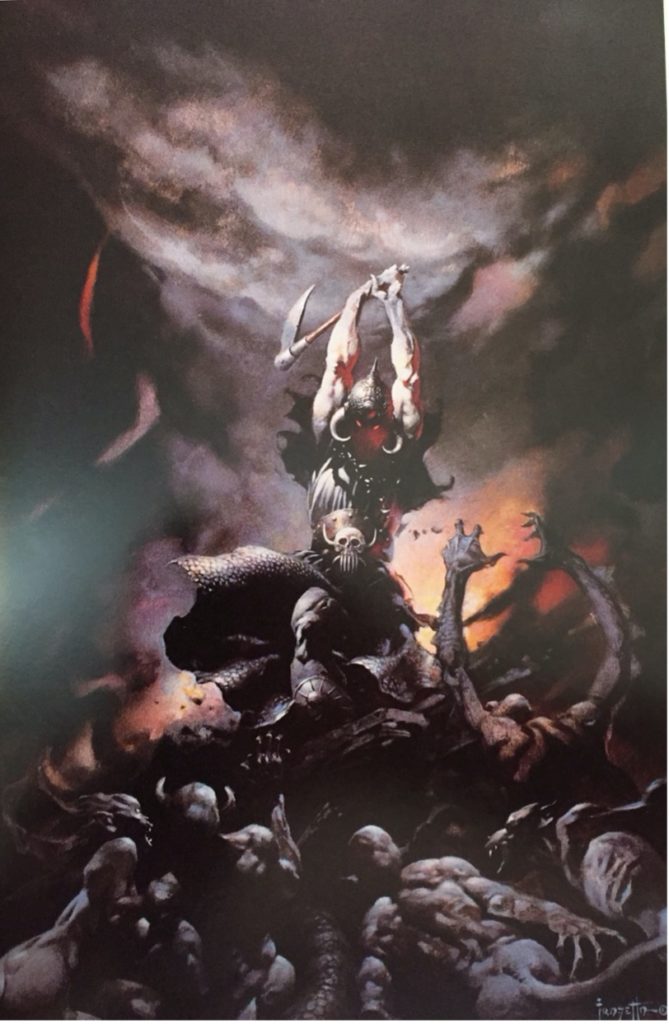
Evidently, the “Death Dealer” suffers from what Helen Young has previously termed the “Habits of Whiteness” that pervade fantasy literature. As with Tolkien’s and Howard’s work, white bodies and imagined culture is central to this genre. While I do not presume intent on the commissioning of the Fort Hood statue, given the textual narrative, how do we approach this installation of white violence? In fairness, when the III Corps adopted the character they decided to utilize the more politically correct “Phantom Warrior,” perhaps not wishing to glorify “death.” Still, we cannot divorce this sculpture from its racial overtones because of the larger context of artistic and authorial intent. The Army’s own literature manages to perpetuate some of the problems with this imagery, stating that it “represents the heritage and symbol of America’s Armed Corps” and even connects the “Phantom Warrior’s” horse to those employed by William the Conqueror in 1066. Even when devoid of the textual contribution of Frazetta/Silke, the official narrative insists upon a European past.
By highlighting these issues, I do not mean to attack the Army’s history, though the question of “historical preservation” remains interesting to this conversation. In recent years some discourse has begun to question the public display of Confederate statuary and the naming of military bases for Confederate generals. Opponents of this movement have cried foul, stating that to do so would be to remove American “history.” Of course, these claims are groundless as many of the monuments and bases were erected or named during the early-twentieth century. Yet, even if this were not true, and the icons of Confederacy somehow held an indelible historical value, in what way does an 1980s sword & sorcery construction constitute the pith of American military memory?

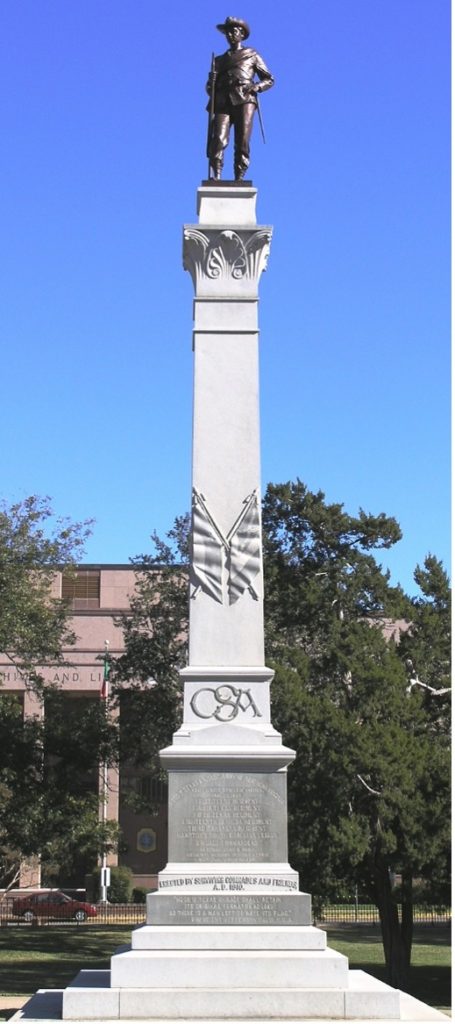
As we continue to move beyond more obvious examples of racist imagery, perhaps new attention needs to be paid to seemingly neutral renderings which bear all the hallmarks of a white fantasy. Indeed, it is the subtle appellations which allows such narratives to endure. With the escalating number of white nationalist affiliations among military personnel, the public should consider “who does this Warrior speak to and what mythologies does he seek to reinforce?”

Tirumular (Drew) Narayanan
PhD Student in Art History
University of Wisconsin, Madison
Works Cited
III Corps Centennial Book. September, 13 2018. https://hood.armymwr.com/application/files/8015/4395/7625/III-Corps-Centennial-Book.pdf.
Frank, Roberta. “The Invention of the Viking Horned Helmet.” International Scandinavian and Medieval Studies in memory of Gerd Wolfgang Weber (2000): 199-208.
Higgs Strickland, Debra. “Monstrosity and Race in the Late Middle Ages.” In The Ashgate Research Companion to Monsters and The Monstrous. Edited by Asa Simon Mittman with Peter J. Dendle, 365-386. New York: Routledge, 2016.
Heng, Geraldine. The Invention of Race in the European Middle Ages. Cambridge: Cambridge University Press, 2018.
Young, Helen. Race and Popular Fantasy Literature: Habits of Whiteness. New York: Routledge, 2016.
Brooks, Lecia. “SPLC Testifies Before Congress on Alarming Incidents of White Supremacy in the Military.” Last modified February 11, 2016. https://www.splcenter.org/news/2020/02/11/splc-testifies-congress-alarming-incidents-white-supremacy-military.
Risen, James. “Why is the Army Still Honoring Confederate Generals?” The Intercept. Last Modified October 6,2019. https://theintercept.com/2019/10/06/army-bases-confederate-names/.


